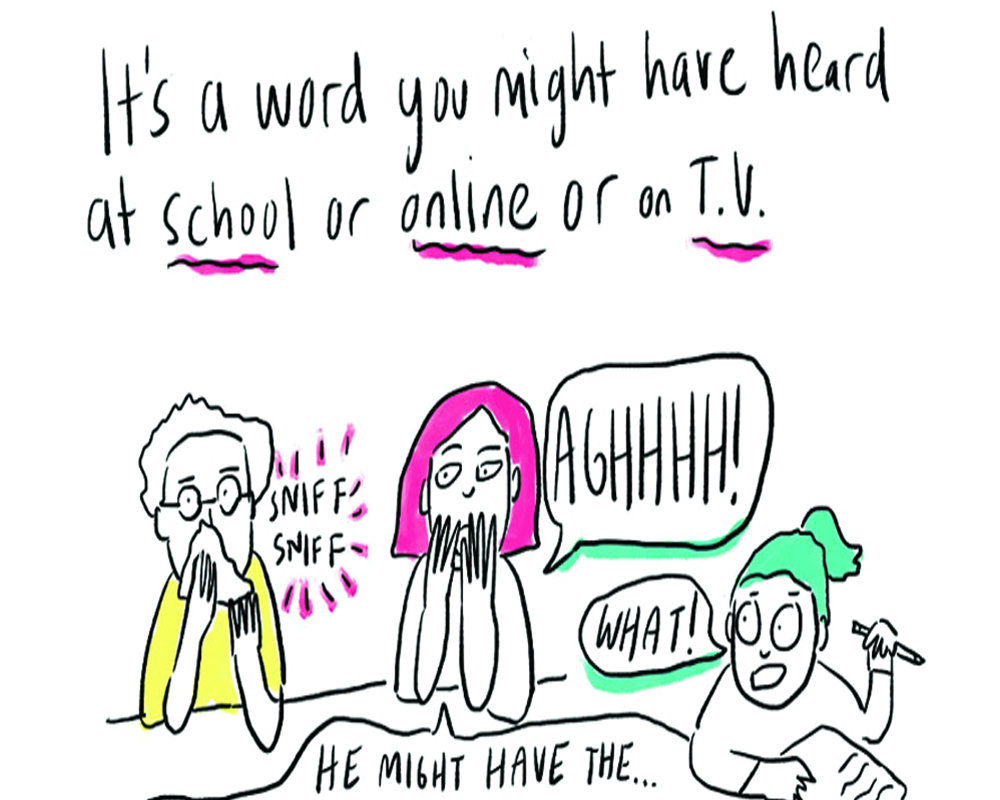Facts and data presented in the comics medium not only deepen our understanding of the transmission of the virus but also cultivate scientific temper
Along with the print media and online platforms, cartoons, comic strips and hand-drawn posters have played a life-saving role during this pandemic. A near-universal language of lines, coexistence of images and words, the visual economy and sequentiality of comic books and strips not only appeals to children, the illiterate, and adults but is also well-suited to disseminate epidemic-related information and for conveying complex scientific information. In some instances, the very act of creating one’s own comic strip or character has therapeutic, coping and healing benefits.
Comics as a citizen-friendly medium: Comics clarify, visualise and translate critical public health messages and the findings of medical science into citizen-friendly information, thus bridging art and science. Sample this: Argha Manna, a science communicator, in ‘Be Aware of Droplets and Bubbles!’ conveys the science behind the COVID-19 transference in an engaging and relatable way. Similarly, Lili Todd and Forest Rohwer of the Viral Information Institute at San Diego State University created a series of hand-drawn comics and posters to offer concise scientific explanations for viral infections, vaccinations, and the wearing of N95/KN95 masks.
Maki Naro and Diana Kwon’s ‘Meet the New Strains’ published by ‘The Nib’ (a leading US online daily comics publication focused on political cartoons, graphic journalism, essays and memoir about current affairs) in February 2021, explain the process of virus mutation in an easy and playful format.
The visually-fascinating and colourful comics explain the otherwise difficult-to-understand mutations of the COVID-19 virus in citizen-friendly ways. Above all, facts, numbers, data, and figures presented in the comics medium not only deepen our understanding of the transmission and prevention of COVID-19 but also cultivate scientific temper and rational approaches to COVID-19.
Comics as a pedagogical tool: Given such strengths, it is not surprising that many Governments across the world and international agencies such as the UN have harnessed the power of comics to educate everyone about wearing masks, social distancing, and hand washing. The Ministry of Health and Family Welfare of the Government of India, for instance, published a mini-comic titled ‘Kids, Vaayu & Corona.’ Scripted and conceptualised by Ravindra Khaiwal and Suman Mor, Vaayu, an Indian superhero, educates the kids about simple precautions (greeting traditionally, among others) to reduce the chances of contracting COVID-19.
The award-winning artist, Sonny Liew, along with infectious disease expert Professor Hsu Li Yang of NUS Saw Swee Hock School of Public Health, Singapore, created two conversational comic series with anthropomorphic characters to dispel doubts about COVID-19. The first series titled ‘Baffled Bunny and Curious Cat’ surfaced in February 2020 and was strictly dated to convey the level of information available at that time. Adopting the tone of a public health announcement, Doctor Duck states: “We should all strive to act responsibly.”
Similarly, the South African health department in its ‘COVID-19 Online Resource & News Portal’ communicates medical information through comic characters like Wazi, Duma, and Lunga. Sharing facts and reliable information is vital for handling COVID-19 and comics do that effectively in various formats and styles.
Comics as personal stories: The most memorable comics are those depicting a range of personal stories describing the fear of contagion, restrictions, touch deprivation, isolation, hope, mental health conditions, angst, among others. Drawn by frontline workers, caregivers, patients, and other stakeholders themselves, these heart-wrenching comics, in styles ranging from fantasy to noir, capture the uncanny that one experiences in the era of COVID-19.
Iranian cartoonist Bozorgmehr Hosseinpour’s moving comics which show a physician holding up a patient as he himself goes underwater is a compelling example.
Again, the ‘New Yorker’ cartoonist Jason Chatfield’s ‘COVID-19 Diary’ published on his website, documents in sparse visuals the artist’s progression from initial denial to grim acceptance of COVID-19, culminating in his acceptance of the virus.
Depictions like these significantly deepen what is labelled as “graphic medicine,” a confluence of comics and healthcare. The recently-published ‘COVID Chronicles: A Comics Anthology’ by ‘Graphic Mundi’ for the first time, collects such comics and covers a broad range of topics such as racism, health inequities and personal realisations of COVID-19.
In these challenging times, comics have served us in multiple ways: As a coping mechanism, as a therapeutic medium, as a pedagogical tool, as an impactful science communication and finally, as a medium which can affect behavioural change in individuals and communities. Given such merits, it is apt that we consider comics as another COVID-19 helpline.
Venkatesan is an Associate Professor and Joshi is a researcher at the National Institute of Technology, Trichy. The views expressed are personal.


























